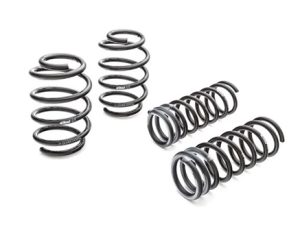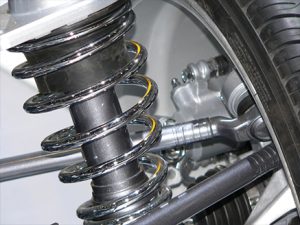Upgrading your vehicle’s suspension with performance springs is one of the most effective ways to enhance your car’s handling, stability, and overall driving experience. Whether you’re an enthusiast looking to improve cornering ability or simply seeking a more controlled and comfortable ride, performance springs offer a wide range of benefits. However, before making the decision to upgrade, it’s important to understand what performance springs are, how they differ from standard springs, and the impact they can have on your vehicle. In this article, we’ll explore the essentials of performance springs, how to choose the right ones for your car, and the potential advantages and drawbacks of this modification.
What Are Performance Springs?

Performance springs are aftermarket suspension components designed to enhance the handling characteristics of a vehicle. These springs are often stiffer and shorter than the stock springs found on most standard cars, which improves the car’s ability to handle aggressive cornering, sharp turns, and high-speed maneuvers. Unlike stock springs, which prioritize comfort and ride height, performance springs focus on providing better control and responsiveness.
Performance springs are typically made from high-quality materials such as chrome-silicon steel or carbon steel, which provide improved strength and durability. These materials allow the springs to withstand higher forces and perform consistently, even under demanding conditions.
Benefits of Upgrading to Performance Springs
Upgrading to performance springs can significantly improve several aspects of your vehicle’s handling and driving dynamics:
- Improved Cornering and Stability: Performance springs lower your vehicle’s ride height, which reduces the center of gravity. A lower center of gravity improves the car’s ability to stay flat during cornering, reducing body roll and improving stability at high speeds. This can lead to more precise handling and greater confidence in tight corners.
- Better Response and Control: Stiffer springs reduce the amount of suspension movement, making the car’s response to steering inputs more immediate and direct. This enhances the driver’s control over the vehicle, particularly in high-performance situations like track driving or spirited driving on winding roads.
- Enhanced Aesthetic Appeal: Performance springs often lower the overall stance of the vehicle, giving it a more aggressive, sportier look. Many car enthusiasts choose performance springs not just for the handling benefits but also for the visual appeal of a lowered car.
- Reduced Body Roll and Nose Dive: With the right performance springs, your car will exhibit less body roll when cornering and reduced nose dive during hard braking. This not only improves handling but also makes the driving experience more comfortable and predictable.
How to Choose the Right Performance Springs

Choosing the right performance springs is crucial to achieving the desired balance between handling improvements and ride comfort. Here are some factors to consider when selecting performance springs for your vehicle:
- Intended Use: The type of driving you do most frequently will influence the type of performance springs you choose. If you’re primarily driving on the street, you may want springs that offer a balance between performance and comfort. If you’re planning to use your car on a track or for autocross, you might opt for stiffer springs that prioritize handling and control over comfort.
- Spring Rate: The spring rate is a measure of how stiff or soft the spring is. A higher spring rate means the spring is stiffer, which improves handling and reduces body roll but may also lead to a rougher ride. A lower spring rate provides more comfort, but it may not perform as well during aggressive driving. It’s important to find the right spring rate for your specific driving needs.
- Ride Height: Performance springs typically lower the ride height of the vehicle. This can improve handling, but it’s important to consider whether the drop in height will be too extreme for your driving style or local road conditions. Some drivers may find that an excessive drop can negatively impact ride quality or ground clearance.
- Compatibility with Other Suspension Components: Upgrading your springs often works best in conjunction with other suspension upgrades, such as performance shocks or struts. It’s important to make sure the springs you choose are compatible with your vehicle’s existing suspension components to ensure optimal performance and avoid uneven wear.
Potential Drawbacks of Performance Springs
While performance springs offer several benefits, there are some potential drawbacks that you should be aware of:
- Stiffer Ride: Performance springs are generally stiffer than stock springs, which can lead to a rougher ride, especially on bumpy or uneven roads. If you prioritize comfort over handling, you may want to carefully consider how much stiffness you’re willing to tolerate.
- Increased Wear on Other Components: Stiffer springs can put additional strain on other suspension components, such as shock absorbers, bushings, and control arms. If these components are not upgraded or replaced when installing performance springs, it can lead to faster wear and the need for additional maintenance.
- Reduced Ground Clearance: Lowering the vehicle’s ride height can reduce ground clearance, which may cause issues when driving over obstacles like curbs, steep driveways, or rough terrain. This is especially important if you live in an area with poor road conditions or frequently encounter obstacles.
- Legal and Warranty Concerns: In some regions, lowering a car’s ride height or making other suspension modifications may be subject to local regulations. Additionally, modifying the suspension can sometimes void your vehicle’s warranty, so it’s important to check with your manufacturer or dealer before making any modifications.
Installation of Performance Springs
Performance springs should be installed by a professional mechanic or suspension specialist who has experience with spring installations. The installation process typically involves lifting the vehicle, removing the old springs, and installing the new performance springs. Depending on the type of springs and the vehicle, the installation may require other suspension adjustments, such as aligning the wheels or adjusting the ride height.
After installation, it’s important to have the vehicle’s alignment checked to ensure that everything is properly set up. A professional can also test drive the car to check for any issues related to handling, ride quality, or suspension noise.
Conclusion
Upgrading to performance springs is a great way to enhance your vehicle’s handling, cornering ability, and overall driving experience. Whether you’re looking for improved performance on the street or track, or simply want a sportier look for your car, performance springs can make a noticeable difference. However, it’s important to choose the right springs based on your driving needs, consider the potential drawbacks, and ensure proper installation for optimal results. With the right setup, performance springs can provide a significant upgrade to your car’s suspension system and make your driving experience more enjoyable and controlled.